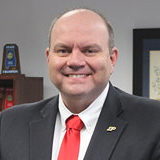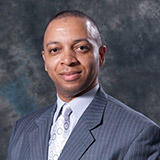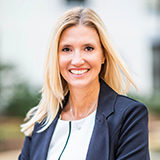2021 NASSP National Principal of the Year finalists

Adam Clemons
Piedmont High School
Piedmont, AL
Piedmont High School (PHS) is located in a city with four traffic lights, few job opportunities, and a defunct cotton mill—and the small, rural high school serves as a flagship for the community. When Adam Clemons became principal in 2013, he set out to help kids feel socially connected, be academically successful, and have an advantage as they enter college or the workforce. He implemented a positive behavioral interventions and supports program at PHS, dubbed “Positive Rewards.” This program has rewarded students for good grades, behavior, and attendance. Clemons also implemented a teachers-as-advisers program known as “team time,” which was then used as a model for the state of Alabama. This 30-minute advisory period allows teachers and paraprofessionals to build relationships that support students academically, psychologically, and emotionally.
Working with district leaders, Clemons helped implement mental health counseling services and training for teachers at local schools. Prior to this, students traveled out of town for counseling services—an expense in time and gas money. They can now receive mental health services at PHS. In 2015, Clemons contacted the local Big Brothers/Big Sisters program to support students who needed mentors. The program has been a success, with many students from the program later becoming mentors themselves. In Clemons’ time as principal, extracurricular participation has grown by 20 percent, the graduation rate has risen by 8 percent, and discipline referrals decreased by over 50 percent.

Richard Gordon
Paul Robeson High School for Human Services
Philadelphia, PA
Richard Gordon took the helm as principal of Paul Robeson High School (PRHS) in 2013 after the school narrowly escaped permanent closure. Gordon discovered the root of the discord was the conflicting relationships between stakeholders—a negative attitude brought on by despondent staff members who questioned their belief in students’ ability to succeed, and students who did not feel academically, psychologically, emotionally, or physically safe. Believing in the limitless potential of the school, Gordon designed a strategic response plan that embraced prevention and intervention measures and ultimately transformed the school. He established the “Core Values” at Robeson, which became the bedrock of daily practice: positive, nurturing, and healthy relationships; growth mindset; college and career readiness; and belief.
Early intervention measures created a protective community environment and reduced risks for students who needed specific supports. A Safe Corridors Program—a collaboration between PRHS and the University City District—provided extra supervision for students traveling to and from school, increasing safety in surrounding neighborhoods. Gordon added over 30 new community partnerships, including one with The Consortium, Inc., a mental health therapy program that provides trauma support for students and builds a trauma-informed school environment. Since the implementation of these programs, truancy rates have decreased by over 22 percent, graduation rates now average 95 percent, and school suspension rates fell below 5 percent, making PRHS one of the safest schools in Philadelphia.

Michelle Kefford
Charles W. Flanagan High School
Pembroke Pines, FL
Michelle Kefford has always been cognizant of the importance of fostering a positive, supportive, and collaborative school culture. She believes it is critical to be consistently visible, available, and approachable, not only to staff but to students and the entire school community. She established “Kefford’s Kitchen,” a program where groups of students can sign up to have lunch with her. During this time, students can ask questions, provide feedback, make suggestions, and share their ideas and vision for the school. The program builds trust by showing students that their opinions, thoughts, and concerns matter. Through these conversations, Kefford has shaped her practice to ultimately provide programs and opportunities for her students to thrive. Kefford also set up “Midweek Muffins With Michelle,” where school staff can come in Wednesday mornings before school starts to engage with one another and with her. Kefford believes that if members of the school community feel valued, respected, appreciated, and loved, the teachers will give more, the students will learn more, and the school will be an amazing place.
Kefford introduced a mentoring program that pairs low-performing ninth- and 10th-grade students with high-performing 11th- and 12th-grade students. Each pair is assigned a staff member who oversees interactions. Team-building activities are conducted several times a year and the mentors meet with their mentees on a biweekly basis. In the first year of the program, learning gains for the school’s lowest quartile rose from 48 percent to 69 percent. Another program, the Genius Bar, invites high-achieving students to tutor their peers during study hall periods. This program has reduced the number of students receiving failing grades by 30 percent.
